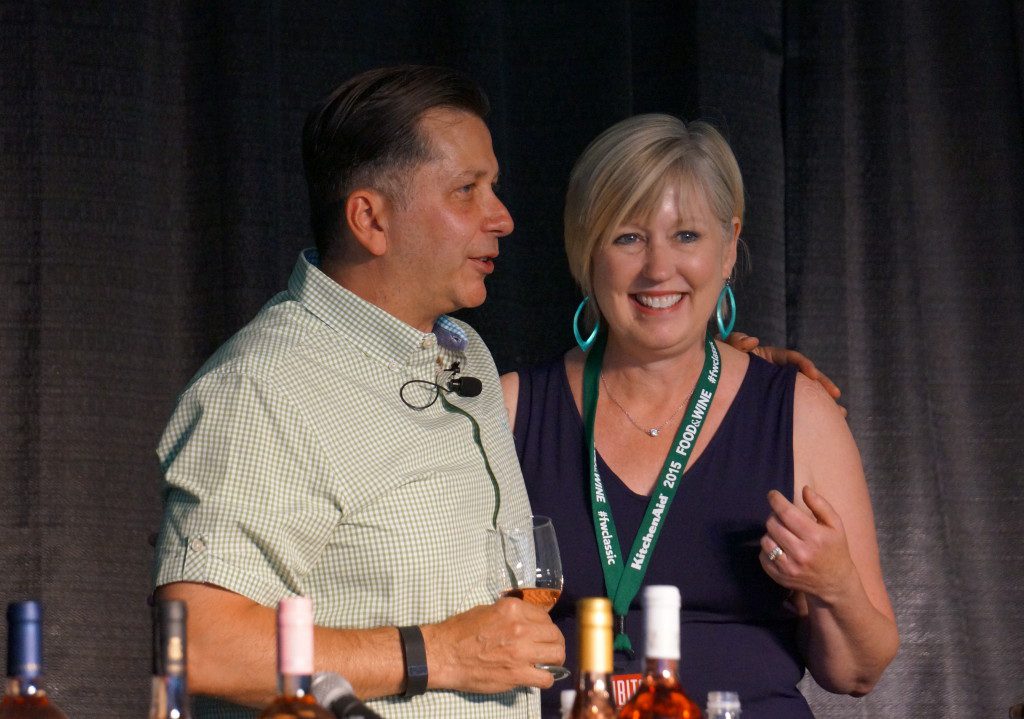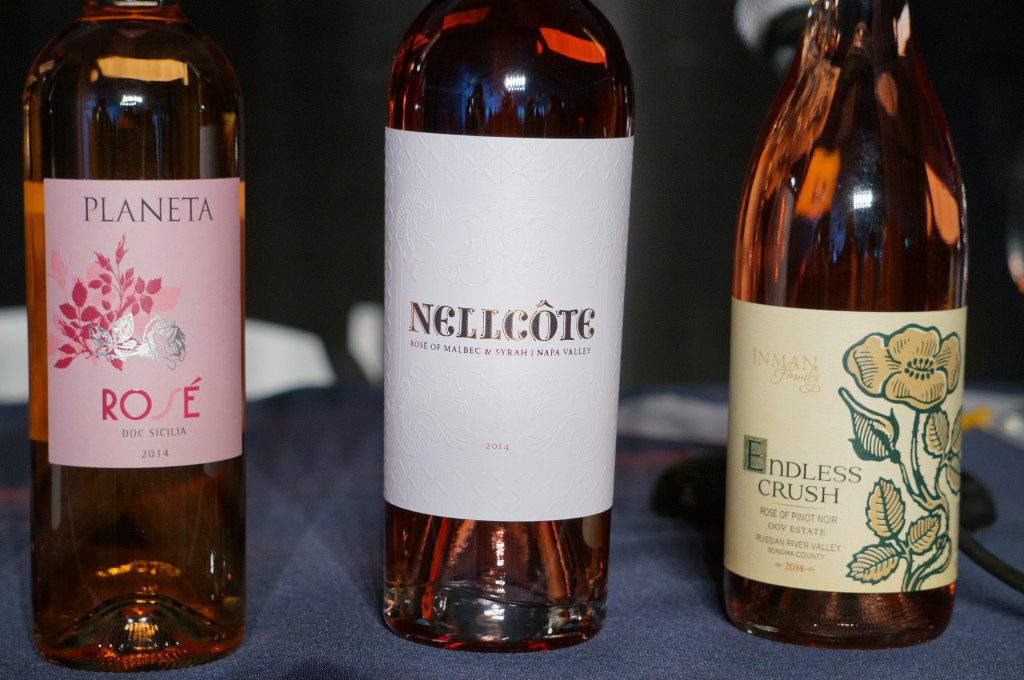Wine and spirits expert, Anthony Giglio, has written over 10 books on wine and cocktails, including “Cocktails in New York” and the “Mr. Boston” cocktail and bartender series. In addition to being an entertaining raconteur, Anthony also has a weekly column aptly named the Wine Wise Guy at Detail.com in the Food & Wine section, is a wine reporter for CBS News Radio, is the wine Director for the Centurian Club at American Express (a high-concept private airport lounge being rolled out at DFW, LaGuardia, Las Vegas, Miami, Seattle and San Francisco), and is the online sommelier for Food & Wine Magazine’s Connoisseur Club. A talented wine and spirits educator, Anthony encouraged the audience to trust our own tastes and relax the rules. Drink what you like, and like what you drink.
When tasting any wine, he highly recommends taking three sips before deciding whether or not you like the wine. The idea being that the first sip doesn’t count because you are bringing to the table what has been on your palate, be it coffee, toothpaste, orange juice…you get the drift. The first sip is just a throw away, don’t even let that factor into your judgement. The second sip is much better, and the third sip, especially if you are tasting with something fatty and salty (think sesame seed crusted chips), can be a game changer. If after these three sips you still do not care for the wine, then that is your perogative, your opinion, but it isn’t until this point that you should form your opinion on the matter. To sum, the first sip rinses your mouth of what was in it before, the second sip gives you a little more balance, and the third sip shows you the true colors of the wine.
This year at the Aspen Food & Wine Classic, he chose to talk rosé, specifically the three ways that rosé can be made. Rosé incorporates some of the color from the grape skins, but not enough to qualify it as red wine. There are three ways in which this can be done:
- Saignée (from the French word meaning bleeding) is where the winemaker “bleeds” off the juice after limited contact with the skins. The wine left after the bleed-off is often made into a more concentrated red wine, while the rosé is a by-product of the bleeding process.
- Whole-cluster pressing is where you set out to make a rosé wine from the get-go. Grapes are crushed and the skin remains in contact with the juice for a short period of time. The “must” (juice that contains the skins, seeds and stems) is then pressed and the skins are discarded rather than left in contact throughout fermentation. The longer the skins are left in contact with the juice, the more intense the color of the final wine. A combo of whole-grape pressing and saigneé is also possible.
- Lastly, is a method he refers to as the “Frankenstein White Zinfandel Method”, where the winemaker makes white wine, and simply pours a little red wine into it. Judging by the phrase he coined, I would gather he is not a fan.
Our tasting of 6 rosé wines included two from France, two from Italy, and two from California, in this order:
- Chêne Bleu 2014 from the Vaucluse (Rhône) is a blend of Grenache and Syrah grapes. The color is pale pink, and on the nose ripe fruit that carries into the taste.
- Jean-Luc Colombo Cape Bleue 2014 is a Syrah-Mourvèdre blend. From Provence, this wine is produced using the saignée method, has a delicate, pink salmon color with hints of peach and pepper on the nose.
- From Italy, the Guado al Tasso Scalabrone Bolgheri 2014 Tuscany (Maremma) of the Antinori dynasty is a Cabernet Sauvignon-Merlot-Syrah blend. It is darker pink in color, very dry, with stone fruit on the nose.
- Planeta Sicilia 2014 Rosé is from one of the premier Sicilian wineries. A 50/50 Syrah-Nero d’Avola blend, the Planeta is a pale strawberry rosé with well-balanced acidity.
- From Napa (Mt. Veeder), the Nellcôte Rosé is a Malbec-Syrah blend. Winemaker Phillip Corallo-Titus was present to give a 30-second speech on the wine, saying he designed this wine for food with its intense fruit flavors.
- Inman Family Endless Crush Rosé of Pinot Noir from the Russian River Valley 2014. Winemaker Kathleen Inman uses a variation on the whole cluster press to produce this beautiful salmon color rosé, hands down my favorite of the tasting…and that was after more that 3 sips.

xo M
PS…I highly recommend this article by Anthony Giglio on Details.com, “Are Sulfites Giving Me a Hangover?” at http://www.details.com/blogs/daily-details/2014/10/hangovers-sulfites.html. Plus, check out www.theconnoisseur.club for more interesting wine tidbits.










